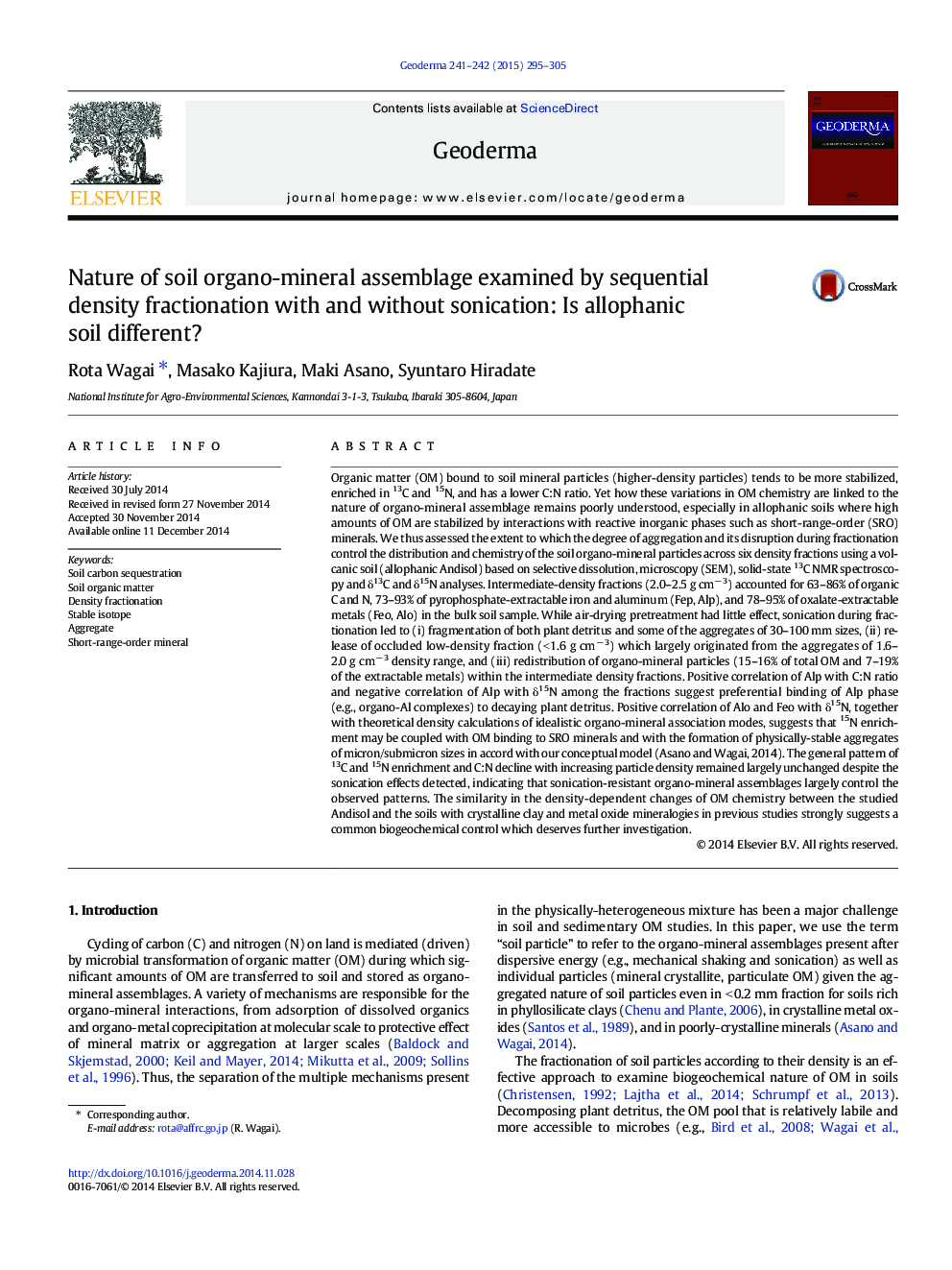| کد مقاله | کد نشریه | سال انتشار | مقاله انگلیسی | نسخه تمام متن |
|---|---|---|---|---|
| 6408623 | 1629465 | 2015 | 11 صفحه PDF | دانلود رایگان |
- Occluded low-density fraction was mainly liberated from 1.8 to 2.0 g cmâ 3 density fraction.
- Lowering of C:N ratio and 13C and 15N enrichment towards higher density were found.
- The density-dependent patterns were largely unaffected by sonication or air-drying.
- Andisol showed the same density dependency despite its unique mineralogy.
- Organo-mineral aggregation appeared to be coupled with 15N enrichment.
Organic matter (OM) bound to soil mineral particles (higher-density particles) tends to be more stabilized, enriched in 13C and 15N, and has a lower C:N ratio. Yet how these variations in OM chemistry are linked to the nature of organo-mineral assemblage remains poorly understood, especially in allophanic soils where high amounts of OM are stabilized by interactions with reactive inorganic phases such as short-range-order (SRO) minerals. We thus assessed the extent to which the degree of aggregation and its disruption during fractionation control the distribution and chemistry of the soil organo-mineral particles across six density fractions using a volcanic soil (allophanic Andisol) based on selective dissolution, microscopy (SEM), solid-state 13C NMR spectroscopy and δ13C and δ15N analyses. Intermediate-density fractions (2.0-2.5 g cmâ 3) accounted for 63-86% of organic C and N, 73-93% of pyrophosphate-extractable iron and aluminum (Fep, Alp), and 78-95% of oxalate-extractable metals (Feo, Alo) in the bulk soil sample. While air-drying pretreatment had little effect, sonication during fractionation led to (i) fragmentation of both plant detritus and some of the aggregates of 30-100 mm sizes, (ii) release of occluded low-density fraction (< 1.6 g cmâ 3) which largely originated from the aggregates of 1.6-2.0 g cmâ 3 density range, and (iii) redistribution of organo-mineral particles (15-16% of total OM and 7-19% of the extractable metals) within the intermediate density fractions. Positive correlation of Alp with C:N ratio and negative correlation of Alp with δ15N among the fractions suggest preferential binding of Alp phase (e.g., organo-Al complexes) to decaying plant detritus. Positive correlation of Alo and Feo with δ15N, together with theoretical density calculations of idealistic organo-mineral association modes, suggests that 15N enrichment may be coupled with OM binding to SRO minerals and with the formation of physically-stable aggregates of micron/submicron sizes in accord with our conceptual model (Asano and Wagai, 2014). The general pattern of 13C and 15N enrichment and C:N decline with increasing particle density remained largely unchanged despite the sonication effects detected, indicating that sonication-resistant organo-mineral assemblages largely control the observed patterns. The similarity in the density-dependent changes of OM chemistry between the studied Andisol and the soils with crystalline clay and metal oxide mineralogies in previous studies strongly suggests a common biogeochemical control which deserves further investigation.
Journal: Geoderma - Volumes 241â242, March 2015, Pages 295-305
